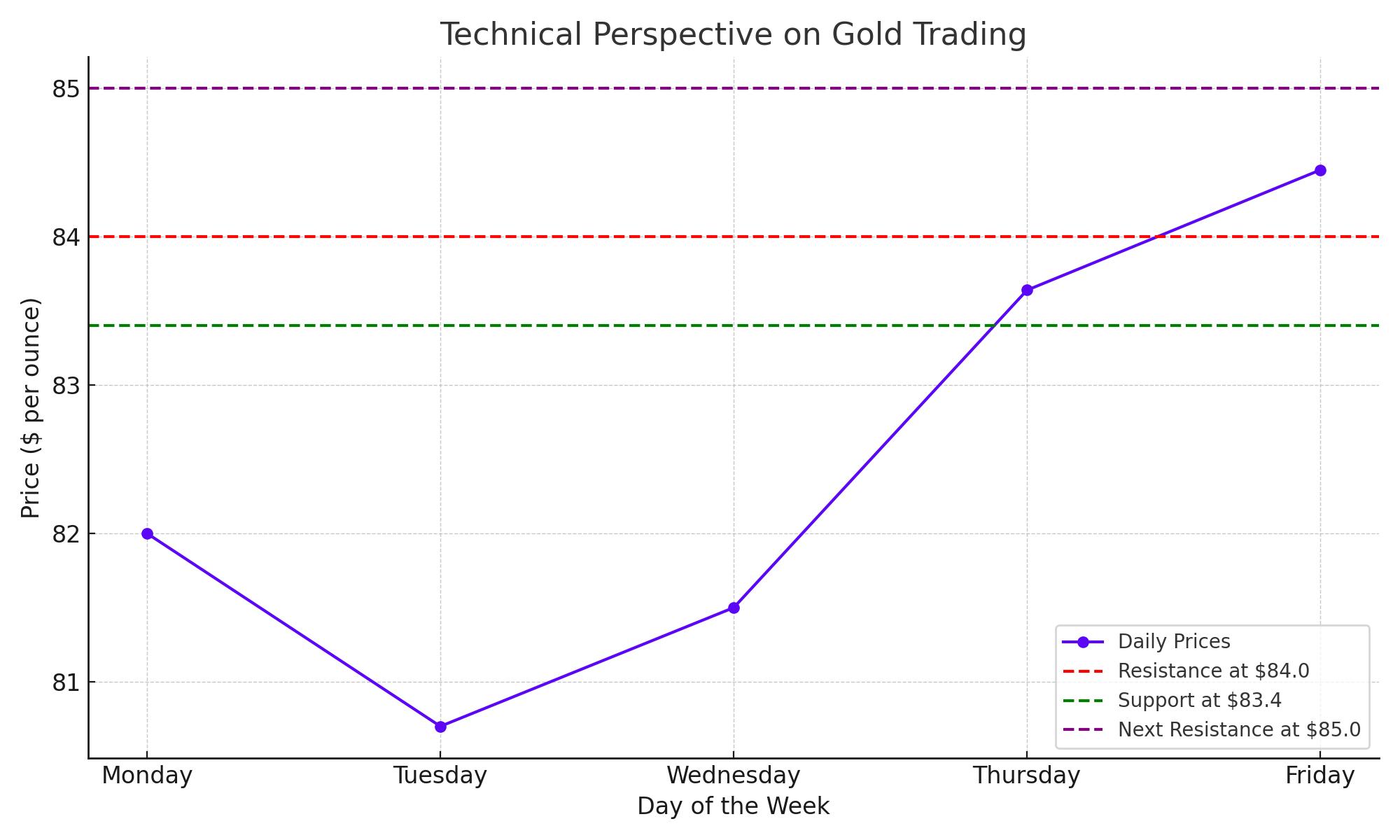
Weekly TradingNEWS Insights into Gold's Market Dynamics
Analyzing Gold's Response to Geopolitical Shifts and Economic Indicators | That's TradingNEWS
4/28/2024 12:00:00 AM
Weekly Gold Market Analysis: Factors Influencing Gold Prices
Overview of Gold's Price Dynamics
Last week, gold prices demonstrated a significant level of volatility, influenced primarily by geopolitical and macroeconomic developments. The precious metal opened the week under the $82.00 mark, reaching a weekly low near $80.70, only to recover and close the week around $83.64, with a peak at $84.45. Despite geopolitical tensions in the Middle East, gold's price trajectory managed a gradual ascent, staying comfortably within a one-month price mid-range, which raises potential inflationary concerns if this upward trend persists.
That's TradingNEWS
Read More
-
GPIQ ETF Rises on 10% Yield and AI Boom as Investors Brace for Tech Volatility
14.10.2025 · TradingNEWS ArchiveStocks
-
Ripple (XRP-USD) Stabilizes at $2.51 as Whales Buy $5.5B and ETF Outflows Shake Crypto
14.10.2025 · TradingNEWS ArchiveCrypto
-
Natural Gas Price Forecast - NG=F Falls to $3.07 as Supply Glut and Weak Heating Outlook Hit Demand
14.10.2025 · TradingNEWS ArchiveCommodities
-
USD/JPY Price Forecast - Dollar to Yen Slides to 151.80 as Trade Tensions Boost Yen Strength
14.10.2025 · TradingNEWS ArchiveForex




















